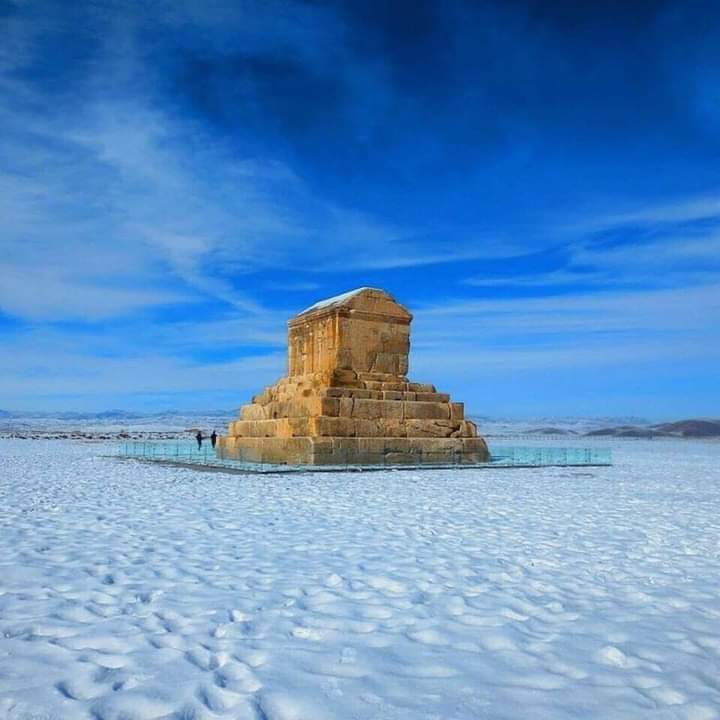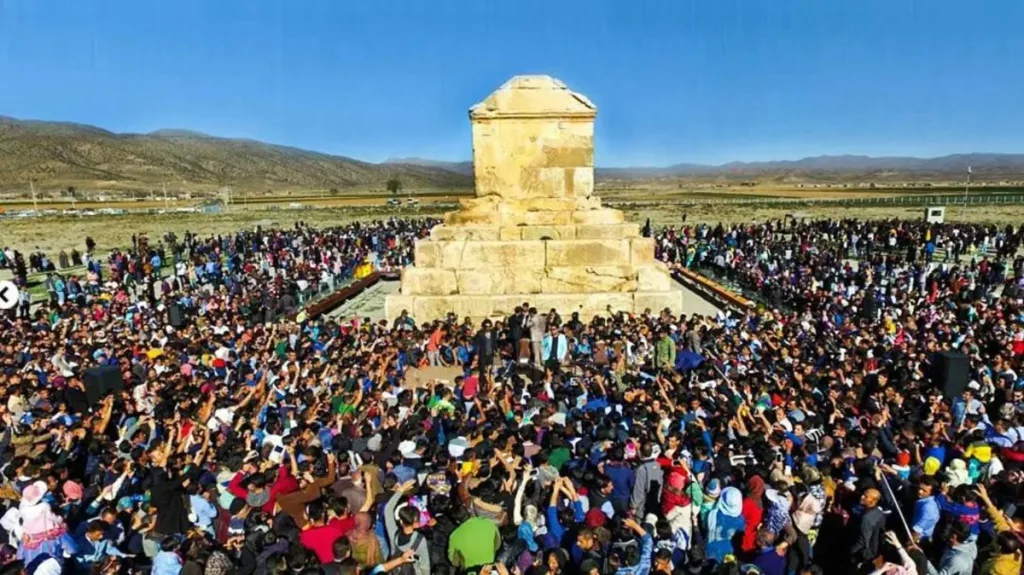The Tomb of Cyrus the Great
Here rests the king of kings, Cyrus the Great
The sepulcher of the esteemed Cyrus the Great finds its revered location in Pasargadae, the ancient capital of the illustrious Achaemenid Empire. This historic site is nestled approximately 40 kilometers from Persepolis, within the captivating Fars province of Iran. A magnificent testament to his legacy, the tomb stands resplendent, constructed meticulously with ashlar blocks, soaring to a height of just above 11 meters (433 inches).

Resistance
Each year, the 29th of October assumes profound significance as “Cyrus the Great Day,” celebrated with fervor by Iranians worldwide, and notably within Iran itself. The gatherings at the sacred tomb reverberate with nationalist fervor, echoing resounding slogans not only celebrating Cyrus the Great but also expressing dissent against the current governance under the Islamic Republic.
In 2016, the monumental gathering witnessed tens of thousands of Iranians chanting impassioned nationalistic and pro-monarchy slogans. Of particular significance was the striking presence of diverse groups, including nomads, tribesmen, and minority communities from provinces like Azerbaijan, Kurdistan, and Khuzestan, among others.
However, in October 2017, the Islamic regime took measures to obstruct Iranians from convening at Pasargadae. They closed all roads leading to the sacred site and erected barriers around the tomb, aiming to deter the gatherings on this significant day.
Despite such attempts, the tomb of Cyrus the Great endures as an iconic symbol of Iranian nationalism, representing the unwavering spirit of resistance against oppression. It profoundly exemplifies the Iranian people’s steadfast commitment to human dignity and human rights, honoring the illustrious legacy of Cyrus the Great.

